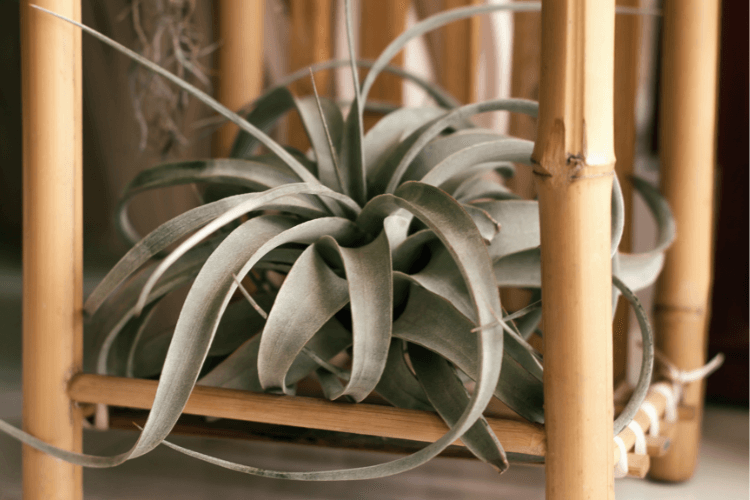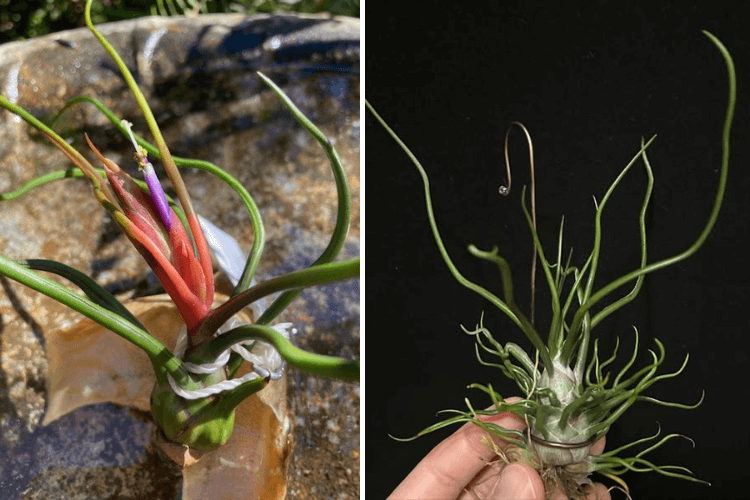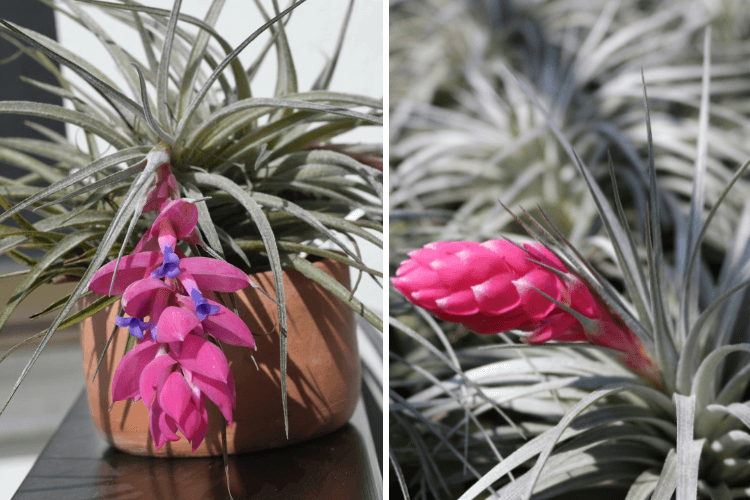Imagine transforming your living space into a serene oasis of greenery, without the hassle of messy soil or demanding care routines. Air plants, scientifically known as Tillandsia, are the epitome of effortless elegance, offering versatility and charm for any setting. Whether you’re a seasoned plant enthusiast or just beginning your indoor gardening journey, understanding the different types of air plants can help you find the perfect match for your home.
These remarkable plants thrive on air, minimal water, and a little love. In this guide, we’ll explore the types of air plants, their unique traits, and how to care for them. By the end, you’ll not only appreciate their beauty but also feel inspired to add these living works of art to your space.
Table of Contents
What Are Air Plants?
Air plants, scientifically known as Tillandsia, are a genus of over 650 species that grow naturally in tropical and subtropical climates. Unlike traditional plants, air plants absorb water and nutrients through their leaves rather than their roots. This characteristic allows them to grow without soil, making them versatile and easy to maintain.
Key Features of Air Plants
- Epiphytic Growth: They often grow on trees, rocks, or other surfaces.
- Minimal Maintenance: Perfect for busy individuals or those new to gardening.
- Aesthetic Appeal: Available in a variety of shapes, sizes, and colors.
Whether you’re decorating with a Tillandsia air plant or adding greenery to a minimalist terrarium, these plants are a unique addition to any home.
Benefits of Growing Air Plants
Why choose air plants over traditional potted options? The benefits speak for themselves:
- Soil-Free Growth: No messy soil to deal with, making them perfect for indoor spaces.
- Versatile Display Options: From hanging displays to air plant holders, the design possibilities are endless.
- Improved Air Quality: They naturally filter and purify the air.
- Low Maintenance: Watering is as simple as misting or soaking.
Whether nestled in an air plant terrarium or perched on a piece of driftwood, these plants are both functional and decorative.
The Most Popular Types of Air Plants
Air plants come in many varieties, each with unique characteristics and care requirements. Below are some of the most popular types of air plants to consider for your collection:
1. Tillandsia Ionantha (Ionantha Air Plant)

This compact plant is a favorite among enthusiasts due to its vibrant green leaves and occasional red or pink blush during bloom.
- Care Tips:
- Bright, indirect light.
- Mist 2–3 times a week or soak weekly.
- Perfect for small spaces or terrariums.
2. Tillandsia Xerographica

Known as the “King of Air Plants,” this species boasts large, silver-green leaves that curl gracefully.
- Care Tips:
- Thrives in bright light.
- Requires soaking every two weeks.
- Stunning as a standalone decor piece.
3. Tillandsia Caput-Medusae

With its tentacle-like leaves, this plant makes a bold statement.
- Care Tips:
- High humidity and bright, indirect light.
- Mist frequently to maintain moisture.
4. Tillandsia Bulbosa

Featuring a bulbous base and thin, twisting leaves, this plant has an otherworldly appearance.
- Care Tips:
- Weekly soaking and moderate humidity.
- Ideal for creative air plant holders.
5. Tillandsia Stricta

This compact species is known for its soft, green leaves and occasional blooms.
- Care Tips:
- Mist frequently.
- Suitable for terrariums or hanging displays.
| Air Plant Type | Light Requirement | Watering Frequency | Unique Feature |
|---|---|---|---|
| Tillandsia Ionantha | Bright, indirect | Mist 2–3 times/week | Compact, vibrant colors |
| Tillandsia Xerographica | Bright | Soak every two weeks | Large, curling leaves |
| Tillandsia Caput-Medusae | Bright, humid | Mist frequently | Tentacle-like appearance |
| Tillandsia Bulbosa | Moderate | Soak weekly | Bulbous base and thin leaves |
| Tillandsia Stricta | Bright, indirect | Mist frequently | Soft leaves, occasional blooms |
Creative Display Ideas for Air Plants
One of the best things about air plants is their flexibility in decor. Here are some innovative ways to display your types of air plants:
1. Air Plant Holders
Choose from wood, ceramic, or metal holders to showcase your plants stylishly.
- Ideal for minimalist interiors.
- Look for unique air plant holders to complement your decor.
2. Air Plant Terrariums
Create a miniature ecosystem with:
- Sand or pebbles as the base.
- Decorative elements like seashells or small figurines.
- Open containers for airflow.
3. Hanging Displays
Suspend air plants using:
- Macramé hangers.
- Driftwood arrangements.
- Glass globes.
These displays add visual interest and make your Tillandsia air plants a centerpiece in any room.
How to Care for Different Types of Air Plants
Proper care ensures your air plants thrive. Follow these essential guidelines:
1. Light Requirements
- Bright, indirect light is best.
- Avoid direct sunlight, which can scorch leaves.
- Consider artificial grow lights for low-light areas.
2. Watering Schedule
- Mist 2–3 times per week or soak in water for 20–30 minutes weekly.
- Shake off excess water to prevent rot.
- Adapt frequency based on humidity levels.
3. Air Circulation
- Place in areas with good airflow.
- Avoid enclosed spaces without ventilation.
4. Fertilizing Tips
- Use a bromeliad or air plant-specific fertilizer monthly.
- Dilute fertilizer to avoid overfeeding.
Care Table for Common Air Plants
| Type | Watering | Light | Humidity |
|---|---|---|---|
| Tillandsia Ionantha | Mist 3 times/week | Bright, indirect | Moderate |
| Tillandsia Xerographica | Soak every two weeks | Bright | Low |
| Tillandsia Caput-Medusae | Mist daily in dry climates | Bright, humid | High |
| Tillandsia Bulbosa | Soak weekly | Moderate | Moderate |
Frequently Asked Questions about Air Plants
Q: How often should I water my air plants?
Most types of air plants require misting 2–3 times per week or soaking weekly.
Q: Can air plants flower?
Yes, many air plants produce a stunning air plant flower once in their lifetime, often followed by the growth of offsets (pups).
Q: What is the best way to display air plants?
Air plants can be displayed in air plant terrariums, air plant holders, or creative hanging arrangements.
Q: Do air plants need fertilizer?
While not essential, a monthly application of diluted air plant fertilizer can promote healthy growth.
Conclusion: Embrace the Versatility of Air Plants
Exploring the different types of air plants allows you to find the perfect fit for your home or office. Their unique beauty, minimal care requirements, and versatile display options make them a must-have for any plant lover.
Take the first step toward enhancing your space with these captivating plants. Whether you choose a vibrant Tillandsia air plant or an intricate air plant terrarium, the possibilities are endless.
Ready to start your air plant journey? Choose your favorites today and watch your space come to life!

